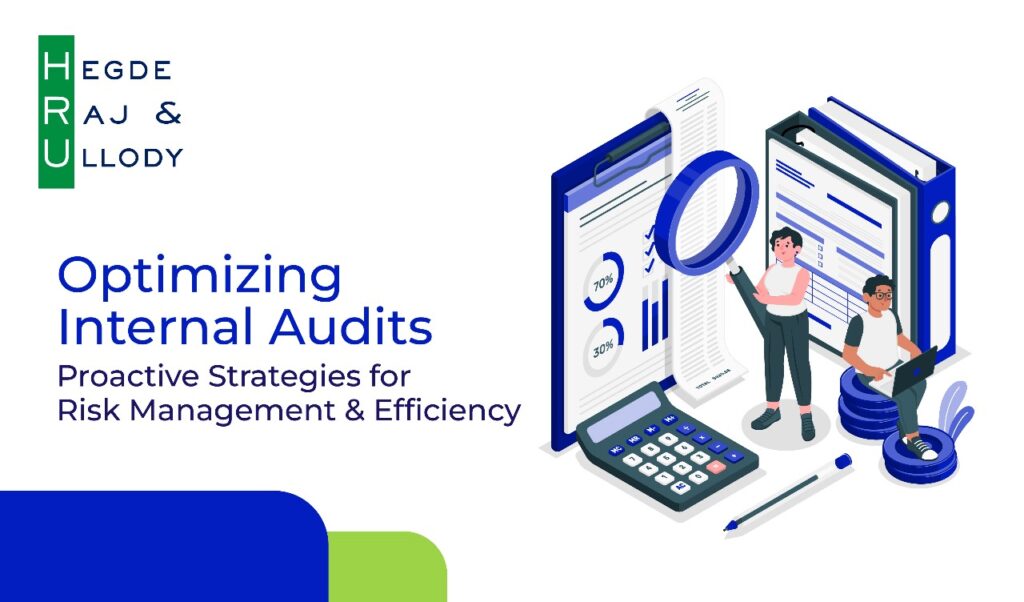Internal audits serve as a critical tool to enable an organization to achieve the highest level of both regulatory compliance and maximum operational efficiency with the utmost integrity, within the business context. While it is helpful to understand the theoretical bases of internal audits, actual worth is created through practical implementation. This article addresses the practical methods of conducting an internal audit in the modern era and how proactive planning, use of technology, and the data-based approach can significantly enhance the effectiveness of the audit process.
1. Role and Importance of Internal Auditions
Historically, the role of an internal audit is mainly seen as a way of compliance by focusing mainly on the efficiency and identifying inefficiencies with regard to compliance with various regulations. However, internal audits today have undergone an enormous role change. Now, their importance is largely seen with respect to providing strategic elements in risk management and their operational effectiveness. Their maximum value is, therefore visible in their ability to pre-empt such issues that they would otherwise become major problems for the organization.
A progressive audit does not only identify weaknesses but also makes a contribution to strategic decision-making. The ability to forecast probable risks and inefficiencies creates a huge advantage for the organization, leading towards sustainable growth and strength.
2. Risk-Focused Audit Strategy
A very effective audit strategy in the current scenario is risk-based, which focuses audit work on areas of highest and most significant risks. Most organizations are currently facing significant challenges such as cyber issues and changes in regulations. Concentration of auditors at high-risk sectors will work well in this context
Key Steps in a Risk-Centric Audit Strategy:
Risk assessment: Identify the major risk facing your organization, which includes financial, operational, compliance, and geopolitical risks that are external factors.
Prioritization: Following the identification of these risks, classify them according to the likelihood and potential impacts of the risks. The greater the risks, the greater the focus of audit.
Risk monitoring: Monitor risk on a monthly basis. That minor issue some months ago is now a significant danger to the organization.
This approach ensures that the process of audit is updated based on the business environment of the today’s world, making the process more relevant and relevance.
3. Technology: Efficiency in Auditing
Technology is changing the efficiency performance of internal audits by how fast the world works nowadays. Advanced tools create simple processes for auditing, give secret insights, and allow conducting assessments in real-time risk management. Here is the extent to which technology modernizes internal audits:
Data Analytics: Using powerful analysis tools, the auditor may find the trend, anomalies, or inefficiencies of the operation in the business. These could allow the auditor to act preemptively against malpractices that could potentially result in fraud or mismanagement in a business. For example, an auditor could detect irregularities through data analysis relating to transactions.
Automation: Automation technologies reduce human error and speed up repetitive tasks like data gathering and reporting. This enables the auditor to focus on high-value activities, such as complex data analysis or strategic recommendation refinement.
Artificial Intelligence (AI): AI-based audits are becoming increasingly sophisticated. Machine learning algorithms can detect subtle risks or patterns that may be overlooked by human auditors, thus enabling faster and more informed decision-making.
4. Practical Steps for Conducting an Effective Internal Audit
While technology highly enhances the auditing process, a strong audit still requires a well-structured methodology. Here are some critical steps to ensure a successful internal audit:
Define Specific Objectives: Identify clear goals for the audit, like assessing internal controls, compliance, or operational efficiency. A focused approach ensures that the audit produces meaningful insights.
Develop a Comprehensible Audit Plan: Provide the scope of the audit, timelines, focus areas, and necessary resources. A well-crafted plan keeps the system in order and efficient in executing the process of audit.
Involve Stakeholders: Communication during the audit requires stakeholders. Educate the management, employees, and concerned departments about the purpose, progress, and outcome of the audit for their participation in collaboration in the execution and implementation of findings.
Document Findings and Recommend Actionable Steps: The report should be comprehensive but concise summarizing findings and recommending practical steps. Such guidance would help management to act speedily in making changes and correcting deficiencies.
5. Key Internal Audit Considerations
Internal audits will remain the cornerstone of managing risk, improving operational performance, and regulatory compliance. The most effective internal audits will be characterized by:
A proactive risk-oriented methodology.
Use of the latest technologies like data analytics and artificial intelligence.
Actionable insights leading to measurable business results.
Proactive identification of emerging risks and progressive audit methodologies would maximize the value from an internal audit for sustainable growth.
Conclusion: Embracing a Proactive and Technological Approach
Internal audits have evolved from being mere compliance tools to becoming strategic assets that drive operational efficiency and risk management. By embracing a proactive approach and leveraging modern technologies, businesses can significantly enhance the effectiveness of their audit processes.
A risk based audit strategy ensures that resources are focused on areas with the highest risk, thus providing more relevant and actionable insights. Technologies such as data analytics, automation, and AI enable auditors to detect anomalies, streamline processes, and make more informed decisions in real-time.
To maximize the benefits of internal audits, businesses should:
- Regularly Review and Update Internal Controls: Consistently enhancing internal controls helps in adapting to new challenges and maintaining robust financial oversight.
- Train Employees on Proper Revenue Recognition: Comprehensive training ensures employees adhere to established standards and minimize errors.
- Maintain Clear and Accessible Financial Records: Well-organized records support accurate auditing and facilitate compliance.
By implementing these practices, organizations can ensure regulatory compliance, improve operational performance, and foster a culture of accountability. Ultimately, this leads to sustainable growth and a strong financial foundation.
In today’s fast-paced business environment, the value of a well-executed internal audit cannot be overstated. By staying proactive and utilizing advanced technologies, businesses can turn potential risks into opportunities and drive long-term success.



